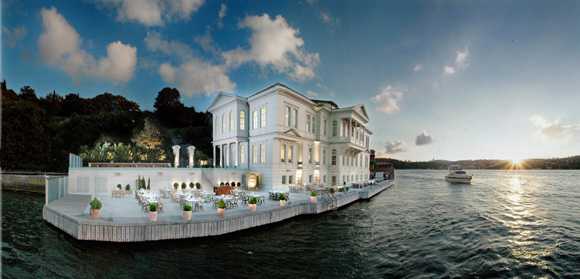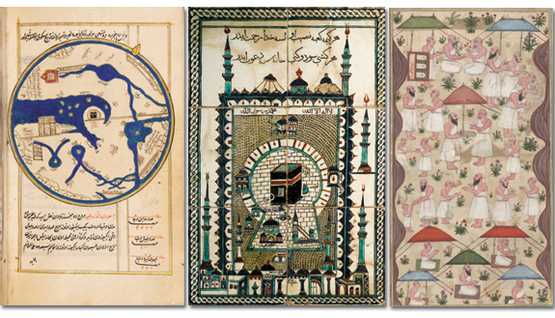“In Texas, they have cowboys,” Faruk Haydargil told me, partly in holster-grabbing sign language. “In Gaziantep, we have baklava.”
By SETH KUGEL
 The Frugal Traveler’s Mediterranean Trip
The Frugal Traveler’s Mediterranean Trip

Mr. Haydargil, owner of the Haydaroglu baklava shop in downtown Gaziantep, speaks just a few words of English. But no one I talked to during a week in this sun-scorched ancient city better described the vital importance of the pistachio-and-phyllo-dough treats here.
Gaziantep, frequently just called Antep, is considered by many to be the culinary capital of Turkey, home to everything from simple kebabs to complex feasts. It is unquestionably the pistachio and baklava capital. Outside the city, pistachio trees fill parched plains that gently slope to the horizon. On the bustling streets around Mr. Haydargil’s shop, merchants selling nuts or baklava or both seem to occupy every other shop. How can so many stay in business?
I love pistachios, so when I first heard about Gaziantep (population 850,000), I wondered if I should veer 60 miles off the Mediterranean coast — the defining geography of the first seven weeks of my trip — to spend a week inland. But the city is also famous for its mosaics, recovered from archaeological excavations at Zeugma, a nearby ancient site that had its heyday during Roman times. So when I received a press release in June from the Turkish Culture and Tourism office saying the museum had opened, I knew I had to go to Gaziantep. Who but the most uncultured nut-hater would choose not to?

Seth Kugel for The New York TimesA kebob cook by the municipal stadium in Gaziantep.
And, frugally speaking, Gaziantep is really cheap. No need for taxis: historic houses and mosques, mesmerizing bazaars, a castle, several museums, countless tea houses and restaurants are all in walking distance from the numerous hotels in the small downtown area. Entrance fees to attractions typically cost one Turkish lira (or 63 cents at 1.6 lira to the dollar). Eating can be so inexpensive it’s a joke: a lunch of doner kebab (gyro-style chicken or lamb) on puffy pita with tomato, parsley and onions and a container of the yogurt drink ayran ran as low as 1.50 lira (at the bustling and very friendly Donerci Mehmet Usta at the corner of Istasyon Caddesi and Dahi Ahmet Sokak). I checked into the two-star Belkis Hotel downtown after being offered a 5-lira discount on their 40-lira single rooms, but there are endless choices nearby, from dirt-cheap options to the reasonably priced boutique hotel Asude Konak.
Even the city’s most elegant regional restaurants, where I went in search of some hard-to-find traditional dishes, were totally affordable. I got out of the city’s most famous restaurant, Imam Cagdas, after kebabs, salad and dessert for 28 lira; at the elegant Sahan, where outdoor tables line a pool of soothing fountains, I ordered gluttonously: an icli kofte (a bulgur shell filled with meat and spices and deep-fried); a pistachio kebab served with juicy grilled vegetables; the very traditional yogurt soup called yuvarlama; and a gorgeous salad of walnuts and tomatoes with pomegranate molasses. With ayran and baklava, I managed to spend 35 lira.
But I was here for the pistachios.
So unlike most tourists, who head to the castle on a hill, the copper-workers’ arcade, the bazaars and the mosques, I arranged a tour of the Pistachio Research Institute, a government-run lab that experiments with growing techniques and assists farmers when pests threaten their crops.
Posing as an American tourist obsessed with pistachios (not a far stretch), I spent the day in the hands of the institute’s best English speaker, Kamil Sarpkaya, a researcher specializing in fungi. He let me watch the interactions with farmers who had brought in branches from diseased trees and gave me a tour of the test orchards where they do things like try to recreate the growing techniques of their arch pistachio rival, Iran.

Seth Kugel for The New York TimesAt Celebiogullari, a Gaziantep baklava shop, a worker prepares an order to go.
I also learned some basics. Pistachios for baklava are picked in August when they are higher in protein and lower in fat, a month earlier than those used for plain old eating. Turkish pistachios do not naturally open as widely as Iranian and American pistachios, which makes them harder to eat. And the Turkish word for pistachio, fistik (FUH-stuk), is also slang for “hot babe.” Kamil told me that when he tells people he works at the Pistachio Research Institute, he is frequently asked whether he studies blondes or brunettes.
Most importantly, however, Kamil invited me to a picnic that night with his wife (a textiles engineer) and several of her colleagues. So as the sun set, I found myself at a plastic picnic table in an orchard 45 minutes outside the city, munching pistachios, picking sour cherries from the trees and feasting on a cold yogurt soup, grilled fish, chicken wings and vegetables under the moonlight. I don’t really believe generalizations about one country’s hospitality versus another’s, but Turkey was looking pretty good.
Back to the baklava. I tried about 10 places over five days, from cheap (around 18 Turkish lira a kilogram) to pricey (40 a kilo and up). (A kilogram is 2.2 pounds.) And while I would agree with Kamil — he said he buys the cheap stuff because the worst baklava in Gaziantep is better than the best baklava everywhere else — I could sense a real dedication to craft (and to customer service) at the more expensive places.
My favorite spot was Celebiogullari, which has three locations around the city. (I went to the one at the far eastern end of Gaziler Caddesi, a lively market area.) I ordered baklava variations that had higher pistachio-to-phyllo ratios, which delivered slightly less sugar shock and more explosive pistachio flavor.

Seth Kugel for The New York TimesGarlic for sale on the streets of Gaziantep.
The friendly young men on the staff were so intrigued by the American with the camera spouting random words of Turkish that they came over to sit with me and chat as I ate my triangle-shaped havuc dilimi and the green sushi roll-shaped fistik sarma. (Imagine American waiters simply plopping down uninvited next to a customer to talk.) When an attractive news anchor came on the flat-screen television, I pointed and said “fistik!” Big laughs! My first Turkish joke!
I have no idea how much I spent, because another customer, witnessing the scene, paid my bill for me: another bump for Turkish hospitality.
In Gaziantep I also found pistachios in kebabs, loaded with other nuts into an energy drink called the Atom, and of course in cookies and ice cream. But there was one place I did not expect to find them: breakfast. I had read that liver was the Gaziantep breakfast of choice, and even tried a liver kebab one morning. But a Gaziantep native who follows me on Twitter, Bora Karaman, set me straight, inviting me to his favorite place for katmer, the thinnest of pastry doused in oil, stretched wide like a microscopically thin pizza, then wrapped around pistachios and cream and baked.
The place was Trafik, an outdoor cafe in a shady park in an upscale part of town. Though the katmer was 10 lira (in other parts of town it was 5 or 6), it was made to order, and came out so fresh and hot you had to wait to dig in. (It’s on Kilic Ali Caddesi, two blocks north of 100 Year Park.)
I had one more important pistachio-related task: to see where the things are grown. So I rented a car and headed toward Sanliurfa, figuring I’d detour through pistachio-farming villages, take some photos and see what happened. At first I was disappointed by the pistachio landscape: the fields themselves were parched, and calling the dreary one-mosque villages of concrete houses and rusting machinery sleepy would be generous; this was Rip Van Winkle territory.
But my luck changed in Intepe, a town of about 500, when I met Nuveram Dana, a 60-something grandfather who approached me quizzically as I photographed some geese. I gave him a big smile, explained in my best Turkish and sign language that I was just exploring and photographing pistachio country. His very first response? Come eat lunch at my house.
Soon I was sitting on rugs in the family’s gathering room as a parade of children and grandchildren came in to gawk at (and videotape) their visitor, and practice their English. Nuveram’s friendly wife, Perihan, stuffed me with chicken pilaf and hydrated me with ayran as the children peppered me with questions patched together from their English class notebooks.

Seth Kugel for The New York TimesOn an evening picnic in an orchard outside of Gaziantep.
We then moved to the relatives’ house next store, where I was treated to a concert of uzun hava music, played on the stringed saz and sung in a wailing lament. I guess it was obvious how thrilled I was to be there, because one of the teenagers said to me: “You are smiling! That means you are happy, so we are happy.”
I found so much to do in Gaziantep that I almost forgot to visit the flashy new mosaics museum that had partly inspired my trip. It wouldn’t have mattered if I had forgotten: press release notwithstanding, the official who turned me away said the museum would not open until August. It appeared the Turkish Culture and Tourism Office had gotten ahead of itself. (The office now says the museum did officially open in June, but has been sporadically closed — as when I was there — and will reopen next week. I wouldn’t count on it, though. Look on the museum’s Web site – oh, wait, it doesn’t have one yet.)
Ah well. Gaziantep lived up to all the rest of its billing: fantastic for the frugal-minded, loaded with friendly people and a thriving food culture, and plenty to do in between meals. I haven’t even described the intriguing culinary museum or the great scene at the open air pub and restaurant Bayazhan. In fact, I’d go so far as to say that if the city were a woman, it would be a real pistachio.
IF YOU GO
Gaziantep is an easy hourlong flight from Istanbul; I took the Turkish discount airline Pegasus Air and paid 165 lira, or just over $100, for a one-way trip. (Buses go for around 70 lira.) I scouted out a few two-star hotels and chose an offer for a 35-lira room at the Belkis, which was a bit dreary but had a great central location, pleasant staff and good air-conditioning. (Those picky about bedding and décor may want to spend a bit more.) Other decent spots I peeked into were the Princess Hotel for 50 lira a night and the chic-looking Yesemek for 60. And those who read the Frugal Traveler simply as a window into how the other half travels should consider Asude Konak, a boutique hotel in a restored Ottoman-era house run by Timur Schindel, a half-American who speaks more English than the rest of the city combined. Rooms start at 70 euros. Ah, one more thing: pick up the fantastic map given out at the Gaziantep tourist office in 100 Year Park not far west of Istasyon Caddesi. (It’s tricky to find so I rigged this Google map with the precise spot.) If you can’t make it to Turkey at all, at least try pistachio baklava at the most far-flung branches of the Gaziantep-based Gulluoglu Baklava in New York.
MY BOOKS
With a 35-lira hotel room, cheap and sometimes free meals all over town, and museums that cost virtually nothing, my only real costs this week were the plane fare from Istanbul and a rental car (160 lira for a day, including gas). Total cost for the week was the equivalent of 330.95 euros, way under my 500-euro budget. That means I could have easily afforded a better hotel and am also 340 euros in the black with two weeks to go, a nice cushion for pricey Cyprus next week.





 Seth Kugel for The New York TimesA kebob cook by the municipal stadium in Gaziantep.
Seth Kugel for The New York TimesA kebob cook by the municipal stadium in Gaziantep. Seth Kugel for The New York TimesAt Celebiogullari, a Gaziantep baklava shop, a worker prepares an order to go.
Seth Kugel for The New York TimesAt Celebiogullari, a Gaziantep baklava shop, a worker prepares an order to go. Seth Kugel for The New York TimesGarlic for sale on the streets of Gaziantep.
Seth Kugel for The New York TimesGarlic for sale on the streets of Gaziantep. Seth Kugel for The New York TimesOn an evening picnic in an orchard outside of Gaziantep.
Seth Kugel for The New York TimesOn an evening picnic in an orchard outside of Gaziantep.
